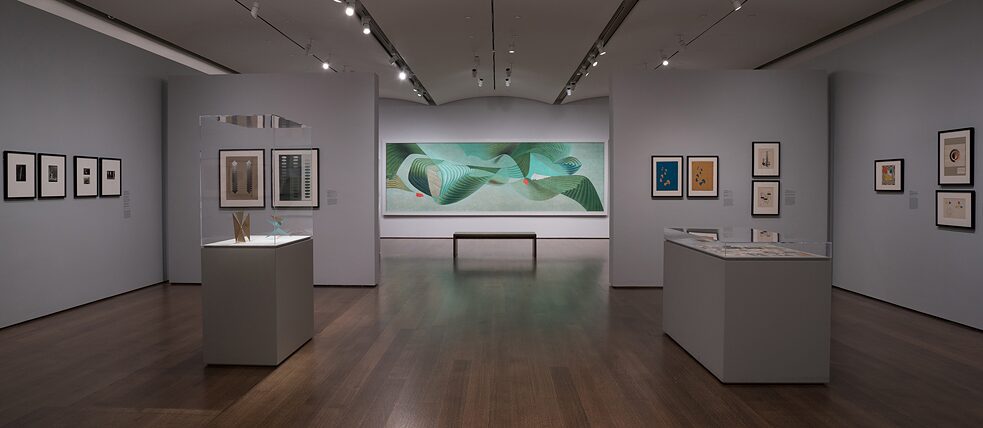The Ultimate Odd Couple
How Harvard Became a Center for Bauhaus in the United States

Of the many places Bauhaus artists flourished after leaving Germany, Harvard University might be the most unexpected. After all, the two schools couldn’t be more different: The Bauhaus was an experimental art school established in the same city and year as the constitution of the Weimar Republic and inspired by the ideals of the November Revolution. Harvard was founded in 1636 – when the United States was still a British colony – and symbolized tradition, wealth, and power.
By Melissa Venator
Among American schools influenced by Bauhaus, progressive institutions like Black Mountain College, where Anni and Josef Albers taught, or László Moholy-Nagy’s Institute of Design, seem like the natural successors of the Bauhaus in the United States.
Yet Harvard promoted Bauhaus long before its artists arrived as exiles. The Harvard Society for Contemporary Art organized the first exhibition of Bauhaus art in the United States in 1930, while Bauhaus was still in operation. The Society’s members, all Harvard students, borrowed art for the exhibition from, among others, recent Harvard graduate Philip Johnson, who acquired his collection on study trips to Bauhaus with fellow Harvard student Alfred H. Barr, Jr., the founding director of the Museum of Modern Art, New York. Harvard students like Johnson, Barr, and the members of the Harvard Society for Contemporary Art were among the first Americans to recognize the importance of the Bauhaus.
Harvard’s First Modernist Architect
Bauhaus activity on campus accelerated in 1937 with the appointment of the Bauhaus’s founding director, Walter Gropius, as chair of the architecture department at Harvard’s newly established Graduate School of Design. Gropius was Harvard’s first modernist architect, and he began his tenure by reforming the teaching and practice of architecture.Before Gropius, Harvard architecture students learned design by sketching plaster casts of ornamental features from historical buildings. Gropius rejected this model of education based on copying the past – what he called “endlessly reviving revivals” – and assigned his students to design solutions for real sites as part of a team of diverse professionals including engineers, city planners, and clients, as architects do in the real world. Many of his students went on to become leading American modernist architects, including Philip Johnson, who returned to Harvard for graduate school, and I. M. Pei, most famous for his 1988 glass pyramid expansion of the Louvre museum.
Only the Foremost Example of the Spread of Bauhaus into Mainstream
Gropius didn’t limit his promotion of Bauhaus at Harvard to his teaching. He wrote books for English audiences, designed buildings that followed Bauhaus principles, and supported American exhibitions of Bauhaus art. He was also instrumental in the creation of the Bauhaus collection at Harvard’s Busch-Reisinger Museum, which now numbers more than 32,000 objects and is the largest collection of Bauhaus material outside of Germany. In 1947, Gropius shared the addresses of Bauhaus artists and supporters living in the United States with the Busch-Reisinger, then known as the Germanic Museum. He also donated his own archive and encouraged others to do the same, so that future generations of students and scholars could learn directly from Bauhaus objects.Gropius’s presence at Harvard from 1937 to 1952 made it a center for Bauhaus activity and reception in the United States. But Harvard is only the foremost example of the spread of Bauhaus artists and pedagogy into mainstream American universities in the 1940s and ‘50s. The Busch-Reisinger’s collection includes student exercises made in Bauhaus-style classes taught by American instructors with no connection to the Bauhaus at Brooklyn College and Tulane University’s Newcomb College that closely resemble student exercises made at the Bauhaus in Germany. The strength of these exercises, made at such distance from the Bauhaus, provide the ultimate demonstration of the Bauhaus’s significance as a laboratory for new approaches to art education.